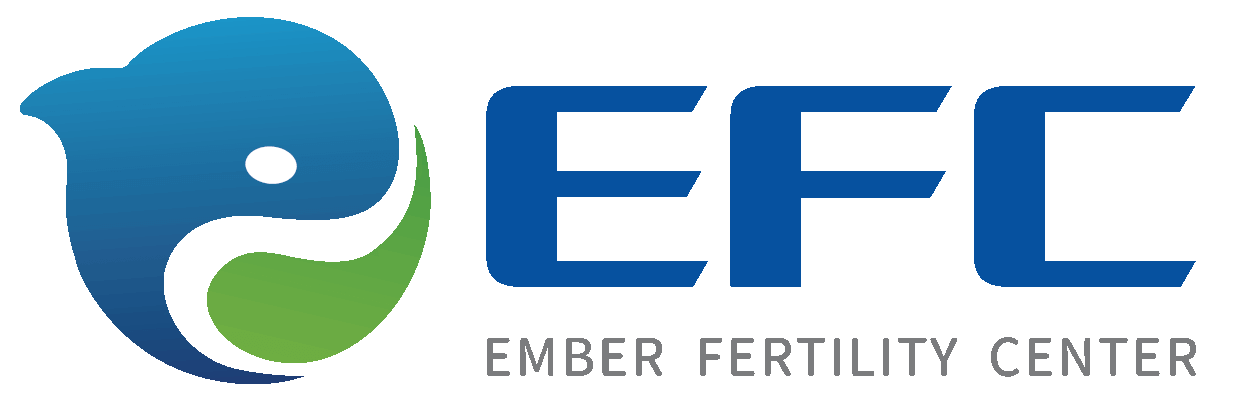Key points of egg freezing
- Egg freezing involves utilizing medications to increase a woman’s production of eggs, extracting multiple eggs, freezing them using a process known as vitrification and storing them for later use.
- A woman’s eggs decrease in quality and number with age so freezing them early in her reproductive years preserves egg viability for better chances of pregnancy in the future.
- Women may also consider egg freezing due to upcoming cancer treatments or other medical conditions that affect egg quality and can result in infertility.
- Women can choose to freeze their eggs for social reasons, such as postponing a family while focusing on their career or until ready to become a mother.
- When pregnancy is desired, her frozen eggs will be thawed, fertilized in the lab with in vitro fertilization (IVF) and the resulting embryo implanted into the uterus.

At Ember, everyone is a VIP – very important patient
And we have a thing for the small things: Each Ember patient gets a dedicated fertility coordinator, a patient’s personal care guide through every clinic detail, from the very first phone call to meeting your little miracle.
What is egg freezing?
Egg freezing requires retrieving eggs (also known as oocytes) from the woman and cryopreservation, which is the freezing and storage of eggs. Cryopreservation cools living cells and tissue to below zero temperatures, which stops biologic activity to preserve eggs for use in the future. The second part of cryopreservation is storing the eggs at optimal temperatures (-196° Celsius/-320° Fahrenheit) for an undetermined period of time until the woman is ready to use them to get pregnant through the IVF process.
Egg freezing has gained popularity due to the vast improvement in the egg freezing process, which was still classified as experimental by the American Society for Reproductive Medicine until 2012. This procedure is now widely used to preserve a woman’s fertility.
The eggs are frozen at a young age when their quality and quantity is good. These healthy eggs can be used in IVF for pregnancy at a later time when the quality and quantity of the woman’s eggs would have decreased. The most important factors in egg freezing being successful is the woman’s age when the eggs are frozen and the number of eggs frozen.
The egg freezing process (see below) begins with retrieving the eggs. This requires stimulation of the ovaries with fertility medications to reinforce the ovaries’ production of eggs.
A large number of stored eggs will increase the chance for a successful pregnancy in the future. This is why we may recommend women undergo several treatment cycles to achieve a sufficient number of eggs. Eggs frozen at Ember Fertility Center are then stored in our cryopreservation center until a woman is ready to use or discard them.
Why do women freeze their eggs?
Women choose to freeze their eggs to preserve their fertility. This can be done for medical or for social reasons. Some women also have their eggs frozen as a method to preserve their fertility before undergoing cancer treatment that can cause infertility, as can certain other medical conditions and procedures.
Women will more likely consider egg freezing for social reasons. This means they make the decision for personal, life-choice reasons for not wanting to have children until later in life.
Some women wish to delay having children because they are not ready for motherhood according to nature’s timing of peak fertility. Perhaps they have not found an ideal partner or the wish to focus younger years on career or education. Egg freezing prolongs their reproductive potential and reduces the pressure of having a child until they are ready.
Freezing eggs does not always guarantee eventual reproduction, but many women consider egg freezing to be a “backup plan” for future infertility or subfertility (difficulty getting pregnant).
The biological clock
The need for women to freeze their eggs when younger is mostly related to age. The greater a woman’s age, the greater the decline in egg quantity and quality, which is often why women struggle to become and stay pregnant later in life.
The American College of Obstetricians and Gynecologists reports that the average woman’s fertility slowly declines until around age 32. The decline then becomes more substantial.
The optimal age for egg freezing is typically under 35, as pregnancy rates tend to decrease for eggs frozen after this age. Generally, egg freezing isn’t recommended for women beyond 40. This age-related decline in infertility is often referred to as a woman’s biological clock.
If pregnancy isn’t on the horizon in the late 30s, preserving a woman’s fertility through embryo freezing is another viable alternative. This method involves creating embryos using a woman’s eggs and either her partner’s or donor sperm, then cryopreserving the resulting embryo. Notably, embryo thawing has a higher survival rate compared with egg thawing.
Evaluating for fertility and ovarian reserve
We require women to have a physical examination to check whether they are a good candidate for this procedure. We look at the levels of reproductive hormones to determine that the woman is fertile. The presence of infertility is a good indication that the eggs are not healthy enough to result in a pregnancy.
We then evaluate the antral follicle count to establish ovarian reserve. Ovarian reserve is a measure of antral follicles and the potential eggs in the ovaries. The antral follicles are small fluid-filled sacs within the ovaries that consist of immature eggs. Our evaluations indicate both the number of eggs and their quality.
The egg retrieval and egg freezing process
The basic steps are egg retrieval and cryopreservation.
Egg retrieval
As mentioned, having more retrieved eggs increases the chance of pregnancy success in the future. Controlled ovarian stimulation (COS) is a process in which ovulation stimulating medications are injected starting from the second or third day of menstruation to produce more mature eggs.
During COS our doctor will perform an ultrasound examination to monitor the growth of the follicles in real-time. Once the eggs are mature and the time is right, we have the patient return, and our doctor will retrieve them.
Egg vitrification
Successful egg freezing and thawing is more difficult than freezing and thawing embryos and sperm. This is due to the fragile biological nature of eggs and to the fact that embryos are composed of multiple cells, making them more resilient to the freezing and thawing process in comparison. The main problem is that eggs contain a lot of water, and when an egg is frozen ice crystals develop and can harm the egg. Sperm is easier to freeze, and embryos are less volatile during the freezing and thawing processes.
According to Fertility IQ, highly competent fertility labs can achieve successful thaw rates of blastocyst embryos as high as 99%. The range for other labs is between 90%-99%, with 95% often given as the average rate of embryo thaw success. In contrast, egg thawing survival rates range between 80% and 90%.
The egg freezing process is now largely done by vitrification, which is a flash freezing process. That pushes the success rates higher than with the previously used slow freezing method. Unlike the slow freezing method, the vitrification freezing method utilizes a cryoprotectant before freezing eggs, which then are placed into liquid nitrogen at a temperature of -196°C for inactivity.
IVF for pregnancy
When a woman is ready to attempt a pregnancy with IVF, we thaw her frozen eggs. The thawing and fertilization of reproductive tissue including eggs can be conducted years after the tissue has been frozen. The IVF process begins after the eggs are carefully thawed according to the specific manner in which they were frozen. The eggs are fertilized with male sperm, and a resulting embryo is transferred to the woman’s uterus in hopes of implantation then a subsequent successful pregnancy. IVF outcomes with frozen eggs are similar to “fresh” eggs, or eggs that have been recently retrieved for implantation without ever being frozen.
Risks of egg freezing
Egg cryopreservation is safe. But due to the complexity of the procedure, it’s critical that it be conducted by an experienced embryology lab, such as ours. This helps prevent the loss of viable eggs.
Egg freezing has no added risk of chromosome abnormalities, birth defects or developmental deficits in children born from cryopreserved eggs versus those born through pregnancies from typical IVF treatments or IVF using intracytoplasmic sperm injection (ICSI).
Ovarian stimulation and egg retrieval have the same risks as IVF treatment, which includes a small possibility of allergic reactions to medications used to stimulate egg production. There may be minor, temporary discomfort or bloating following the procedure.
There is no guarantee egg freezing will be successful in future reproduction due to biological factors affecting egg quality, such as advanced age and genetic problems. All eggs retrieved may not be suitable for freezing or remain viable after thawing.
It is still not known if there is a time limit on the viability of cryopreserved eggs. There may be no time limit, and a definitive answer is still unknown.
The ultimate question: How many eggs do I need to freeze?
The number of eggs a woman should freeze to achieve a successful pregnancy with IVF later can vary based on several factors, including age, individual fertility and the specific IVF clinic’s success rates. For example, a woman under 35 may require around 20 mature eggs to achieve a 90% chance of at least one live birth within a single IVF cycle. However, at age 38, nearly 40 eggs might be necessary for similar odds, making it unlikely within one cycle and potentially requiring multiple attempts.
By age 42, the likelihood of achieving a live birth through egg freezing diminishes significantly, which is why egg freezing is generally not recommended for women over age 40. These figures underscore the importance of considering age-related factors and seeking personalized guidance from a fertility specialist.
Benefits of egg freezing
The main benefit of egg freezing is to provide a woman with an option for reproduction at a later time when she is ready to build a family or serious health issues have been resolved.
It can also remove stress for women and couples by giving them more time to commit to a family.




